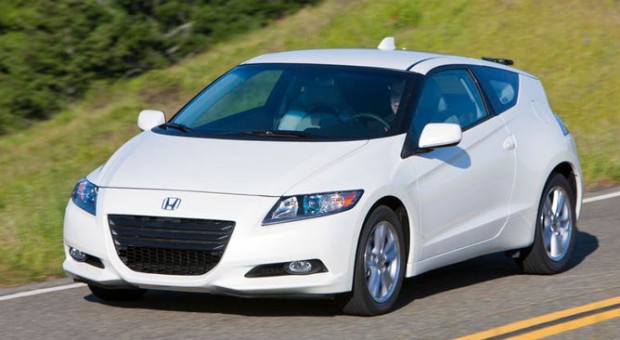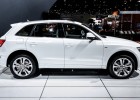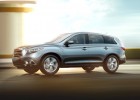
All about hybrid cars – What is a hybrid car?
A hybrid vehicle is a vehicle that uses two or more distinct power sources to move the vehicle.
A hybrid electric vehicle (HEV) combines a conventional ground propulsion system with an on-board rechargeable energy storage system (RESS) to achieve better fuel economy in automobiles than a conventional vehicle without being hampered by range from a charging unit like a battery electric vehicle, which uses batteries charged by an external source. The different propulsion power systems may have common subsystems or components.
Hybrid cars are just like the average car with an extra motor (electric).
These cars reduce fuel emissions because the engine draws on a bank of batteries and not just gasoline engine. The gasoline motors can be shut off and the car can run off electricity for a limited time or distance.
Hybrid electric vehicle
A hybrid electric vehicle (HEV) is a type of hybrid vehicle and electric vehicle which combines a conventional internal combustion engine (ICE) propulsion system with an electric propulsion system. The presence of the electric powertrain is intended to achieve either better fuel economy than a conventional vehicle or better performance. There are a variety of HEV types, and the degree to which they function as EVs varies as well. The most common form of HEV is the hybrid electric car, although hybrid electric trucks (pickups and tractors) and buses also exist.
Modern HEVs make use of efficiency-improving technologies such as regenerative braking, which converts the vehicle‘s kinetic energy into electric energy to charge the battery, rather than wasting it as heat energy as conventional brakes do. Some varieties of HEVs use their internal combustion engine to generate electricity by spinning an electrical generator (this combination is known as a motor-generator), to either recharge their batteries or to directly power the electric drive motors. Many HEVs reduce idle emissions by shutting down the ICE at idle and restarting it when needed; this is known as a start-stop system. A hybrid-electric produces less emissions from its ICE than a comparably-sized gasoline car, since an HEV’s gasoline engine is usually smaller than a comparably-sized pure gasoline-burning vehicle (natural gas and propane fuels produce lower emissions) and if not used to directly drive the car, can be geared to run at maximum efficiency, further improving fuel economy.
How Hybid Cars Work
Full hybrids use a gasoline engine as the primary source of power, and an electric motor provides additional power when needed. Fuel consumption and emissions reductions The hybrid vehicle typically achieves greater fuel economy and lower emissions than conventional internal combustion engine vehicles (ICEVs), resulting in fewer emissions being generated.
In addition, full hybrids can use the electric motor as the sole source of propulsion for low-speed, low-acceleration driving.
This electric-only driving mode can further increase fuel efficiency under some driving conditions.
Battery – The battery stores energy generated from the gasoline engine or, during regenerative braking, from the electric motor. Since the battery powers thechi vehicle at low speeds, it is larger and holds much more energy than batteries used to start conventional vehicles.
Gasoline Engine – The gasoline engine in a hybrid is much like those in conventional vehicles, except that it is usually much smaller and more efficient.
Generator – The generator converts mechanical energy from the engine to electricity, which can be used by the electric motor or stored in the battery. It is also used to start the gasoline engine instantly when needed.
Power Split Device – The power split device is a gearbosex connecting the gasoline engine, generator, and electric motor. It allows the engine and motor to power the car independently or in tandem and allows the gasoline engine to charge the batteries or provide power to the wheels as necessary.
Electric Motor – The electric motor powers the vehicle at low speeds and assists the gasoline engine when additional power is needed. It also converts otherwise wasted energy from braking into electricity and stores it in the battery.
Hybrid vehicle drivetrain
Hybrid vehicles are vehicles with two or more power sources in the drivetrain. There are many different types of hybrid vehicles, although only the gasoline-electric hybrid is currently commercially available.
Hybrids are classified by the division of power between sources; both sources may operate in parallel to simultaneously provide acceleration, or they may operate in series with one source exclusively providing the acceleration and the second being used to augment the first’s power reserve. The sources can also be used in both series and parallel as needed, the vehicle being primarily driven by one source but the second capable of providing direct additional acceleration if required.
Current hybrids use both an internal combustion (IC) engine and a battery/electric drive system (using ultracapacitors) to improve fuel consumption, emission, and performance. Electrically assisted pedal bicycles are a form of hybrid drive. Other combinations of energy storage and conversion are possible, although not yet in commercial production.
Combustion-electric hybrids have larger battery sets than what a normal combustion engine only vehicle would have. Battery and supercapacitor technology is advancing





















